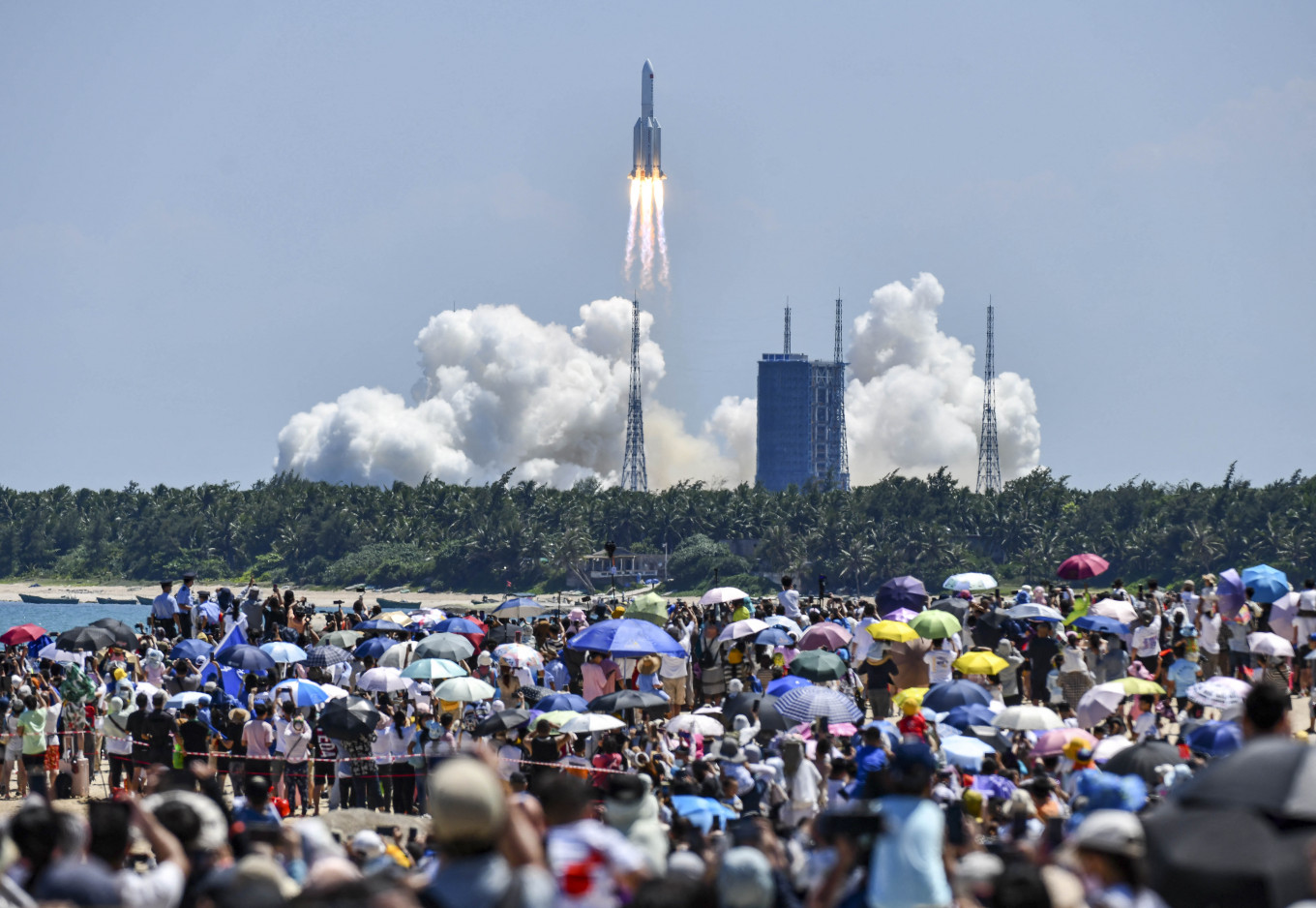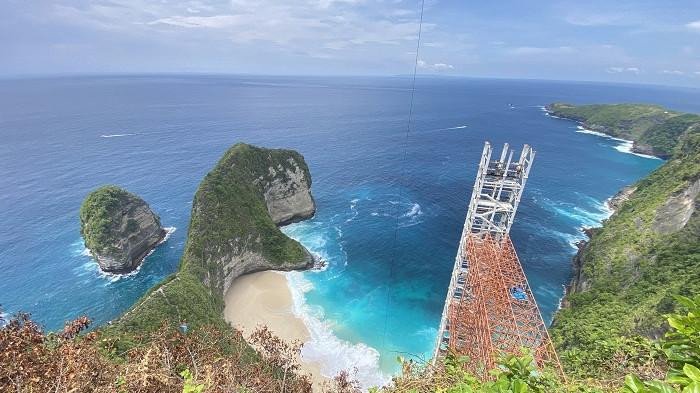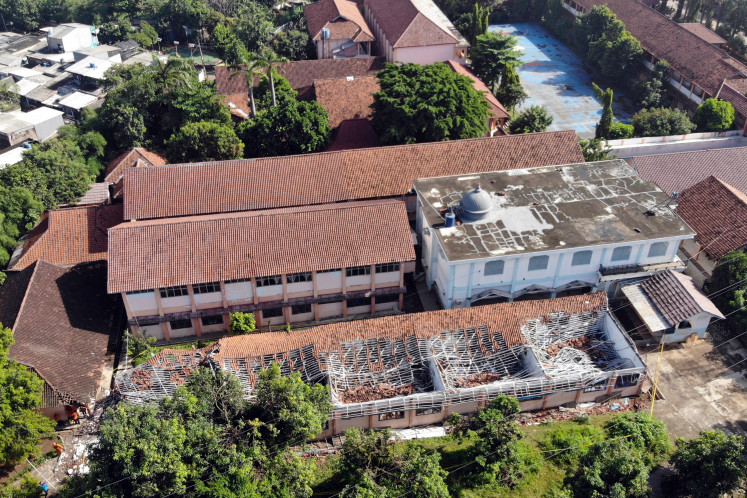Popular Reads
Top Results
Can't find what you're looking for?
View all search resultsPopular Reads
Top Results
Can't find what you're looking for?
View all search resultsChinese rocket debris lands in West Kalimantan
Change text size
Gift Premium Articles
to Anyone
D
ebris from a Chinese booster rocket that made an uncontrolled return to Earth on Saturday has reportedly been found on a farm in Sekayam district, Sanggau regency, West Kalimantan.
Thomas Djamaluddin, a researcher at the Aeronautics and Space Research Organization of the National Research and Innovation Agency (BRIN), said on Tuesday that an examination had confirmed that the debris was from the Chinese Long March 5B (CZ-5B) booster rocket that re-entered the Earth’s atmosphere over the Indian Ocean on Saturday.
“The information that we received is enough to identify the debris. The time and location of the [discovery of the] debris also correlates with the CZ-5B trajectory,” Thomas told Tempo.
Thomas reported that two pieces of debris had been found in Pengadang village, one some 2 meters long and the other 4 m long.
Two pieces of debris were also found across the nearby land border in Sarawak, Malaysia, on Monday.
Bernama reported that Malaysia’s Science, Technology and Innovation Ministry was investigating the two objects to determine whether they were related to the reentry of the Chinese rocket.
The booster rocket had been used on July 24 to launch the second of three modules to complete China’s Tiangong space station.
US space agency NASA has criticized Beijing for failing to share details of the rocket's descent.
"All spacefaring nations should follow established best practices and do their part to share this type of information in advance to allow reliable predictions of potential debris impact risk, especially for heavy-lift vehicles, like the Long March 5B, which carry a significant risk of loss of life and property," NASA administrator Bill Nelson wrote on his Twitter account, AFP reported.
The Tiangong space station is one of the crown jewels of Beijing's ambitious space program, which has landed robotic rovers on Mars and the Moon. It has made China only the third nation to put humans into orbit.
The new module, propelled by the Long March 5B, successfully docked with Tiangong's core module on Monday, and the three astronauts who had been living in the main component since June successfully entered the new lab.
When China launched its first Tiangong module in April 2021, there was a similar frenzy around the possibility of damage caused by an unpredictable booster reentry.
Objects generate immense amounts of heat and friction when they enter the atmosphere, which can cause them to burn up and disintegrate. But larger objects, such as the Long March-5B, may not be destroyed entirely.
In 2020, debris from another Chinese rocket fell on villages in Ivory Coast, causing structural damage but no injuries or deaths.
China has poured billions of dollars into space flight and exploration as it seeks to build a program that reflects its stature as a rising global power.











